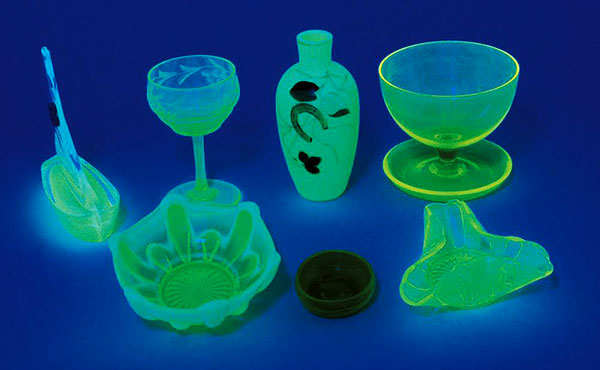
Collectors Weekly has a great gallery and profile of uranium-infused glassware from the early 20th century. They ask experts: is it safe, and why does it glow under UV light?
Vaseline glass or canary glass are the names collectors use. The uranium is not generally considered dangerous in the amounts found in this glass. In fact, collector and expert Barrie Skelcher explains:
It’s the chemistry of uranium that makes Vaseline glass glow, not radioactivity. It wouldn’t make any difference whether the glass contained depleted uranium with the 235 isotope removed or natural uranium; the chemistry is identical. Uranium fluoresces under UV light.
via Boing Boing




